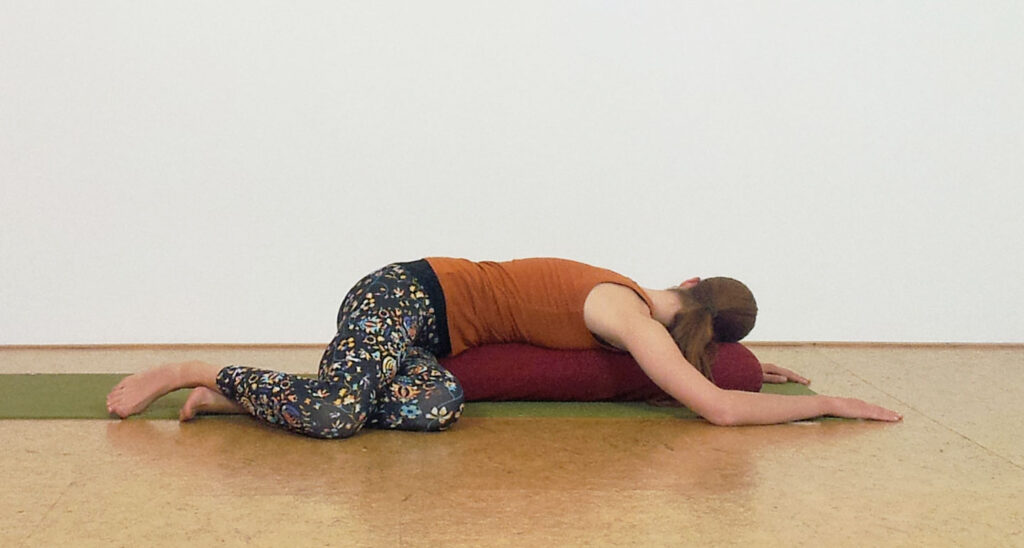How to practice
Sleeping mermaid:
Place a bolster lengthwise on our mat. You can place a blanket on top of the bolster, in the crease of the hips, to support the belly if needed. Bring your left hip against the bolster, knees facing towards the right. The lower leg at a 90 degree angle with the bolster and the top ankle resting in the arch of the lower foot. Place the hands on either side of the bolster. Activate the feet by lifting the toes up, as if you are standing on the floor. This will stabilise the lower back and sacrum area when you twist (maybe try whether you can feel movement in your lower back as you activate the feet). Lengthen the spine on an inhale and twist, and bring your upper body towards the bolster on an exhale.
You can either have your face turned towards the knees, or if it’s comfortable for your neck, turn your face away from your knees. You can turn your head back at anytime if you feel discomfort. Activate your feet exhaling deeply and on an inhale, with the chin towards the chest to keep the neck long, turn your head towards the direction of your knees again.

